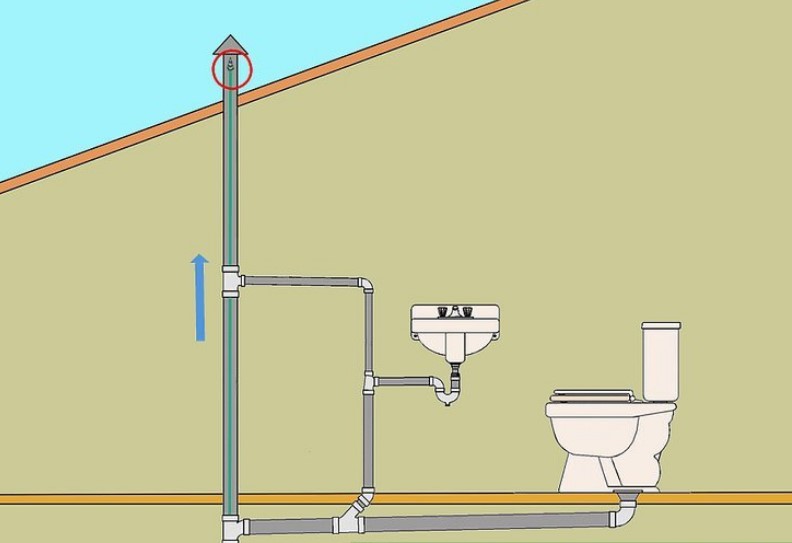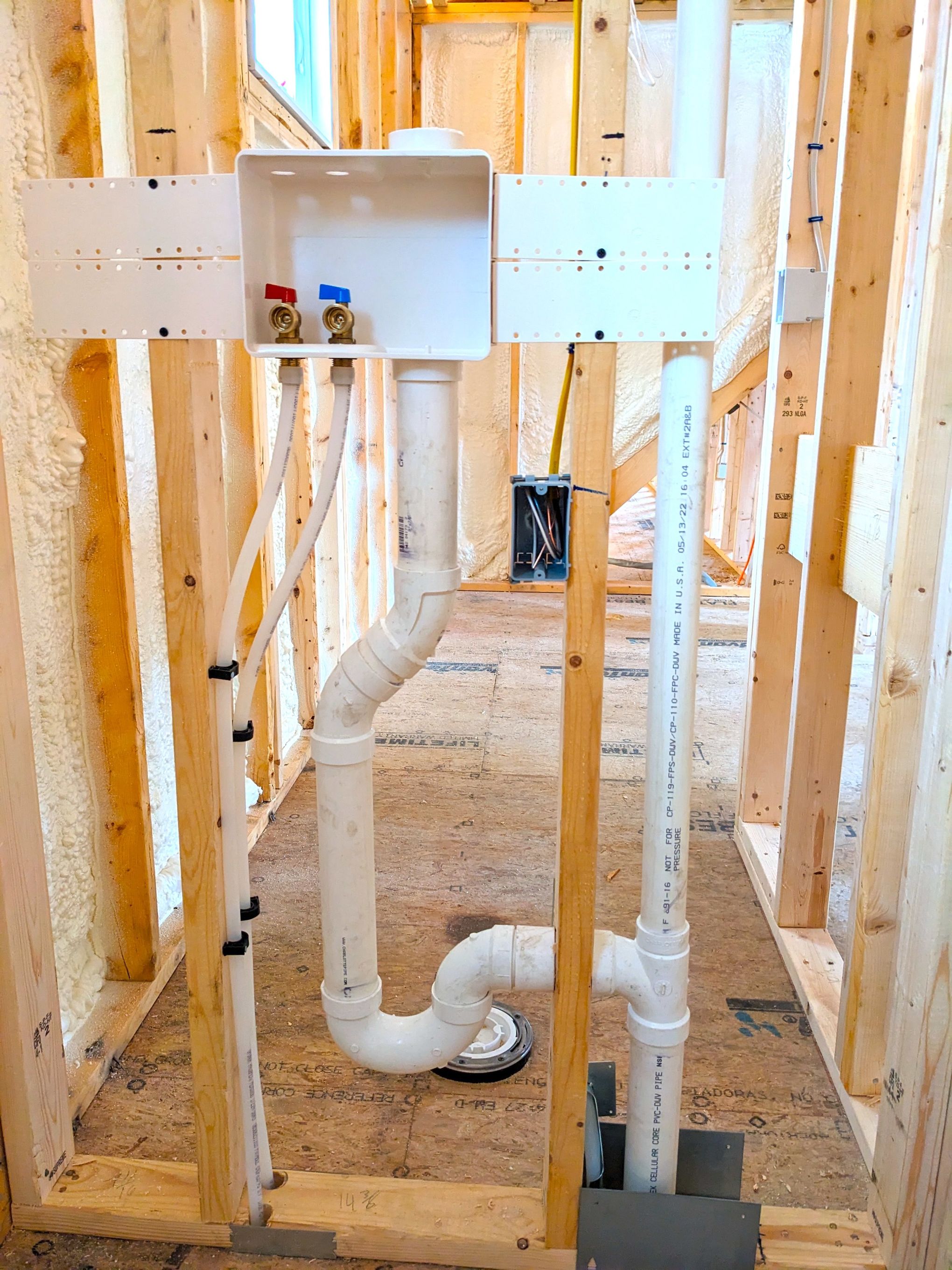The Importance of Ventilation in Plumbing Systems
The Importance of Ventilation in Plumbing Systems
Blog Article
Each person has got their own unique theory in relation to What Is A Plumbing Vent & How Do They Work?.

Appropriate ventilation in pipes systems is typically neglected, yet it is important for keeping the functionality and safety of your home's plumbing. Ventilation aids control air pressure, prevent the accumulation of damaging gases, and make certain the efficient elimination of waste. In this guide, we will explore the significance of correct plumbing air flow, exactly how it functions, and the benefits it gives your pipes system.
Comprehending Ventilation in Pipes
Ventilation in plumbing refers to the network of pipelines that enable air to move through the drain system. These vents serve several objectives, including controling atmospheric pressure within the pipelines, preventing sewer gases from going into the home, and assisting in the smooth circulation of wastewater.
How Ventilation Functions in Pipes Equipments
Atmospheric Pressure Regulation
Proper air flow keeps well balanced atmospheric pressure within the pipes system. When water streams with pipes, it displaces air. Without sufficient ventilation, this displacement can create negative pressure, bring about reduce drains pipes or siphoning of water from traps, which can create unpleasant smells to permeate into the home.
Avoiding Sewer Gas Accumulation
Among the most important features of plumbing vents is to prevent sewage system gases, such as methane and hydrogen sulfide, from collecting within the home. These gases can present serious wellness dangers and are very combustible. Vent pipelines allow these gases to run away safely outdoors.
Assisting in Waste Removal
Air flow helps in the reliable elimination of wastewater by protecting against airlocks in the drainage system. When air can flow easily with the vents, it enables water and waste to stream smoothly via the pipes, lowering the danger of blockages and back-ups.
Sorts Of Plumbing Vents
Key Stack Vent
The main stack air vent, also called the vent pile, is the key air vent in a plumbing system. It expands from the major drainpipe align via the roofing system, enabling gases to get away and fresh air to enter the system.
Branch Vent
Branch vents attach to the major stack air vent and offer specific components, such as sinks, toilets, and showers. These vents guarantee that each fixture has ample air flow to work effectively.
Air Admittance Shutoff (AAV).
An Air Admission Valve (AAV) is a one-way valve that enables air to go into the pipes system without the requirement for a traditional air vent pipe extending through the roof. AAVs are commonly made use of in remodellings or locations where setting up a basic air vent is not practical.
Indicators of Poor Air Flow in Plumbing.
Slow Draining Fixtures.
If your sinks, bathtubs, or toilets are draining gradually, maybe an indicator of inadequate ventilation. Insufficient air flow can develop a vacuum cleaner effect, making it challenging for water to drain pipes appropriately.
Gurgling Seems.
Gurgling noises originating from drains pipes are often a result of air being sucked with water catches as a result of unfavorable stress in the pipelines. This is a clear sign of inadequate air flow.
Undesirable Smells.
Drain odors inside your home are a warning that your plumbing system is not appropriately aerated. This might indicate that sewer gases are not being properly aired vent outside, bring about possibly unsafe conditions.
Usual Air Flow Errors.
Insufficient Vent Sizing.
Utilizing small vent pipelines can cause poor air flow and stress inequalities in the system. It's important to utilize vents that fulfill the particular needs of your pipes system.
Improper Vent Placement.
Placing vents too far from the components they offer can lower their effectiveness. Proper positioning ensures that air can move openly and effectively through the system.
Disregarding Code Demands.
Building codes supply details standards for pipes ventilation. Ignoring these codes can lead to a system that fails to operate properly and may lead to costly repairs or carcinogen.
Benefits of Proper Air Flow.
Improved System Effectiveness.
Correctly ventilated plumbing systems run extra efficiently, with fewer clogs, faster draining, and much less strain on the pipelines. This efficiency expands the lifespan of the plumbing system.
Improved Air High Quality.
By avoiding sewer gases from entering your home, appropriate ventilation adds to far better indoor air top quality, making your living environment healthier and a lot more comfy.
Stopping Water Damages.
Adequate air flow assists protect against water from being siphoned out of traps, which can cause drain gases going into the home and creating water damage in time.
Actions to Make Certain Proper Air Flow.
Consulting Plumbing Codes.
Always speak with neighborhood plumbing codes when creating or changing your pipes system. These codes give the essential guidelines for correct venting and guarantee your system meets safety requirements.
Normal Examination and Upkeep.
Regular inspections can help identify possible air flow issues before they come to be major troubles. Maintenance jobs, such as cleaning up air vent pipelines and checking for clogs, are important for maintaining the system in good working order.
Professional Setup.
For new installments or major adjustments, it's wise to work with a professional plumbing technician. They have the know-how to ensure the air flow system is properly created and set up according to code.
Conclusion.
Appropriate air flow is an essential component of any pipes system, ensuring that it functions successfully and safely. By recognizing the relevance of ventilation, recognizing the indicators of bad air flow, and taking actions to keep your system, you can stop pricey concerns and secure your home's air high quality.
4 Things You Should Know About Your Plumbing Vents
What Plumbing Vents Are
Also called a vent stack, a plumbing vent is a vertical pipe attached to your drain line that runs through your roof. The plumbing vent pipe, or plumbing air vent, removes gas and odors from your plumbing system and allows fresh air to enter the pipes, helping the water to flow out of the drain pipes.
What Plumbing Vents Do
Plumbing vents have two basic functions. One of which is to allow unpleasant smelling wastewater and sewer gasses to escape your plumbing system instead of entering your home. Plumbing vent pipes are typically located on roofs, away from windows, to ensure the fumes exit the home completely.
The other function of the plumbing vent is to move fresh air into your plumbing system. This helps move water through every plumbing fixture in your house, like toilets and sink drains. Think of the way in which you need to let a little air into the bottle as you pour soda in order to make the drink flow smoothly.
Different Types of Plumbing Vents
True vent: This is the most common vent option. In simplest terms, a true vent is a vertical pipe attached to your drain line that exits through the roof. They often function as the main vent that other fixtures can connect to. Re-vent pipe or auxiliary vent: Attached to the drain line near specific plumbing fixtures, re-vent pipes run up and over to connect to the main vent. Common vent: Two plumbing fixtures installed on opposite sides of a wall are typically tied into the vent stack using something known as a sanitary cross. Wet vent: This venting option operates as a drain pipe and a vent at the same time. Wet vent drainage systems drain water from one fixture while venting the air from another. Although they’ve been used for over 100 years, wet vent systems have only recently been added to the plumbing code in many areas. If you’re planning on installing one in a bathroom remodel, make sure you check your local code prior to construction. Loop vent: For free-standing fixtures like kitchen island sinks, loop vents are ideal. These vent pipes run under the floor, rise from the P-trap, and create a loop inside the cabinet sink. Air admittance valve: An AAV is a one-way mechanical valve typically installed at the site of the plumbing fixture. AAVs allow venting to occur without having to tie into a larger venting system. They’re ideal for venting fixtures where you aren’t able to easily connect to an existing vent system. Common Plumbing Vent Issues
Although vent pipes typically don’t have water flowing through them, they’re still subject to many typical plumbing issues. For example, clogs are one of the most common problems associated with sewer vent pipes. If your vent pipe gets clogged, all of your plumbing fixtures tied into the vent stack will be affected.
A sink with a slow drain that bubbles and gurgles or a strong sewage smell around your toilet are both indicators that your toilet vent pipe is clogged. Because most vent pipes exit through the roof, old leaves, twigs or even a bird’s nest could be clogging the pipe.
Clogs in your vent pipe system cause a buildup of negative pressure, meaning that water won’t be able to flow out of your home very well. It’s similar to putting your finger over the opening of a straw to trap water inside. When you remove your finger, the water is able to flow out of the straw.
If you suspect you have any blockage in your vent, make sure you have a professional come examine the situation. Left unchecked, a blocked air vent can lead to other costly repairs, like leaks and sediment buildup.
Under Pressure
Pipe vents are essential aspects of a home’s plumbing system. Owning a home means learning about all sorts of things you never put much thought into before. But by understanding as much as you can about the important systems of your home, you can keep those budgets intact and those anxiety levels low.
https://www.homeserve.com/en-us/blog/home-improvement/plumbing-vents/

I was brought to that editorial about Essential Plumbing Vent Pipes: Understanding Their Role from a good friend on a different domain. Are you aware of anybody else who is excited about the subject? Take a moment to promote it. Thank-you for taking the time to read it.
Book Service Report this page